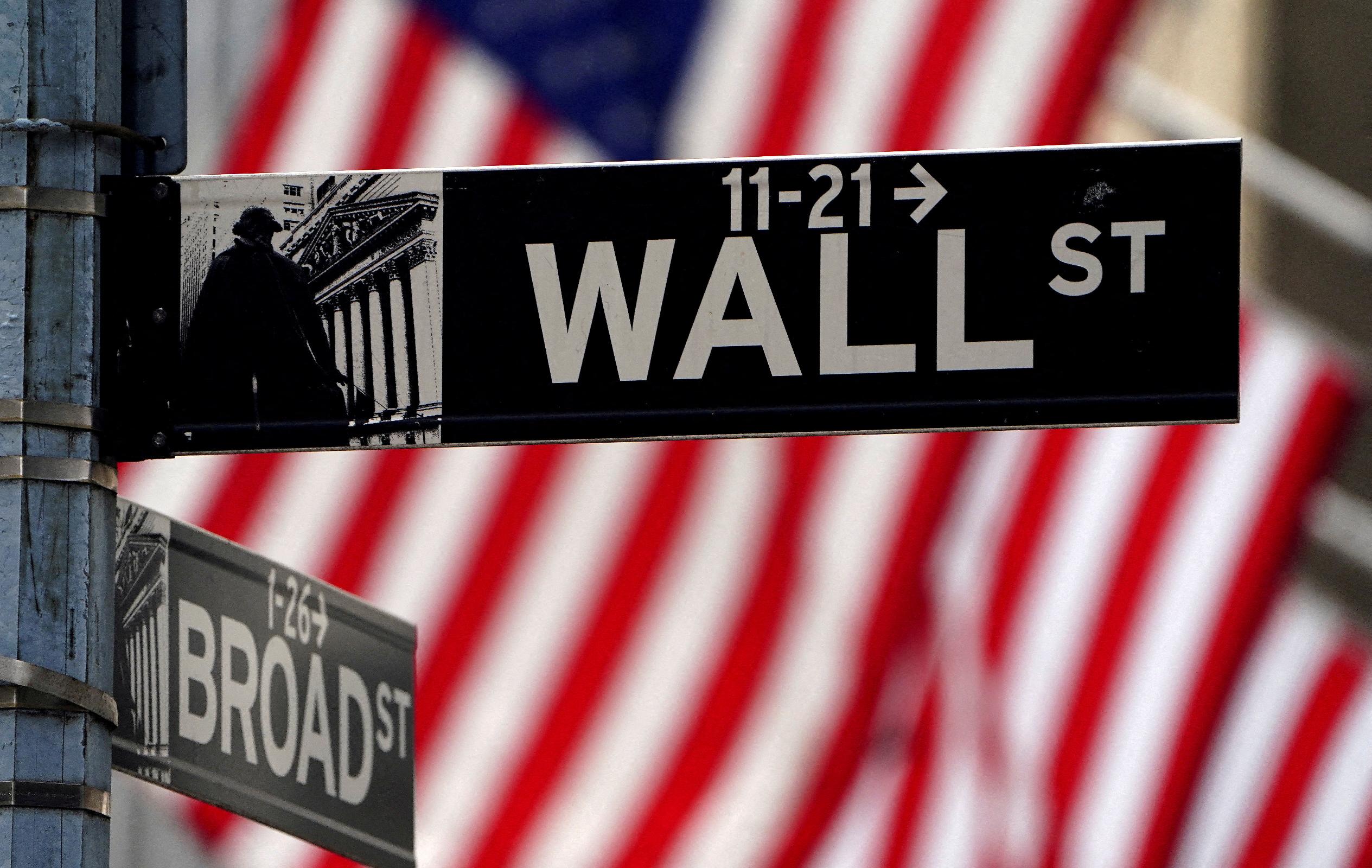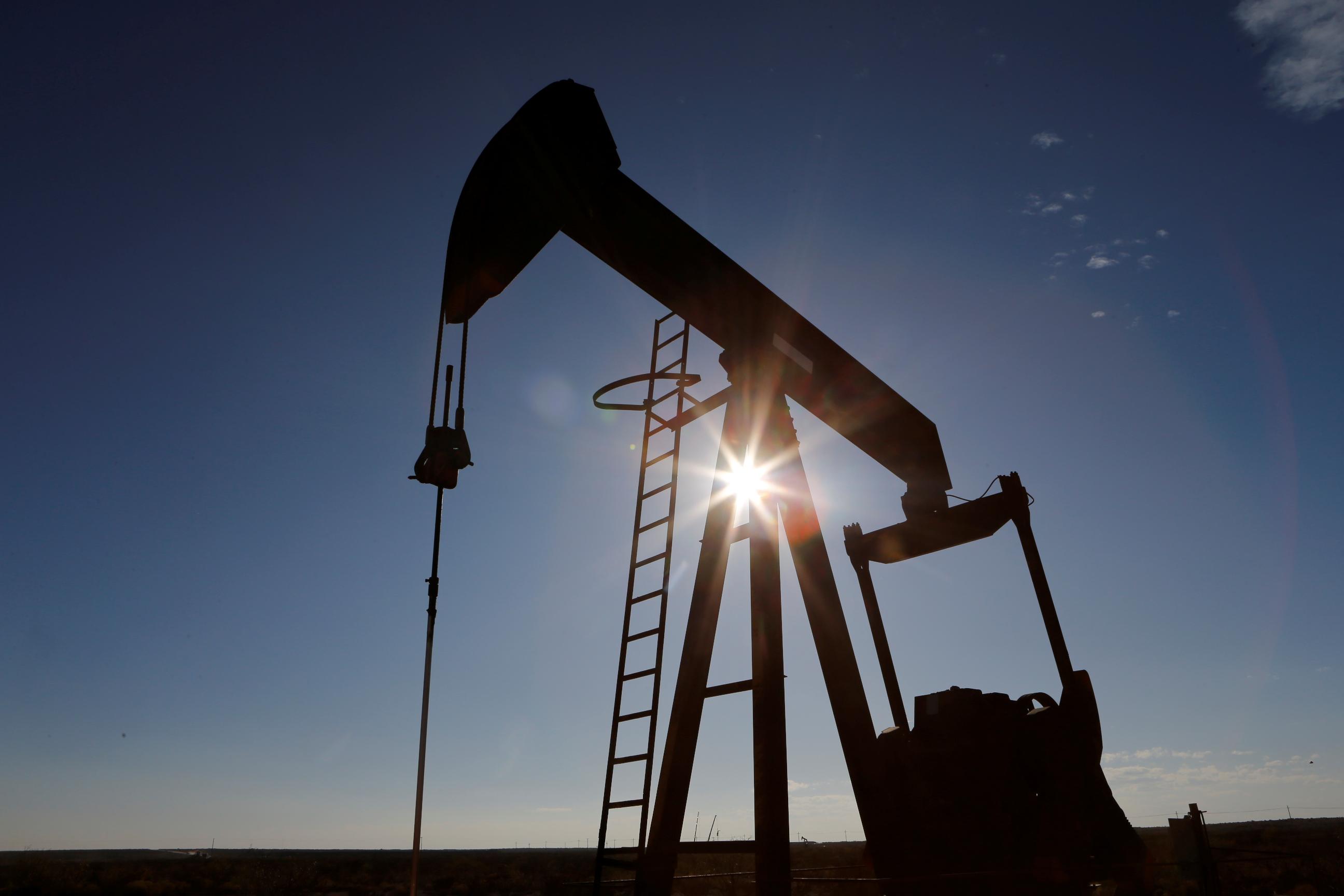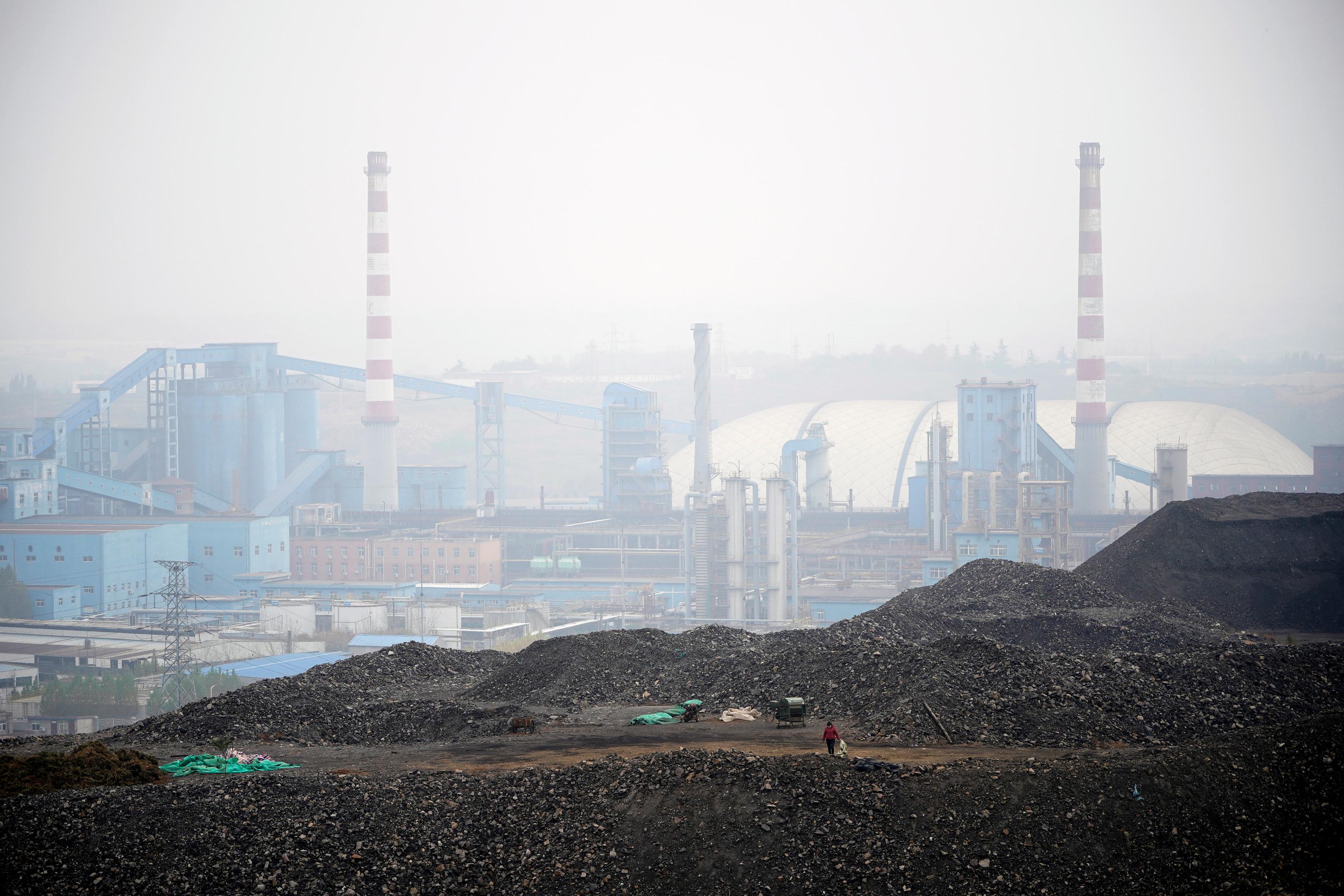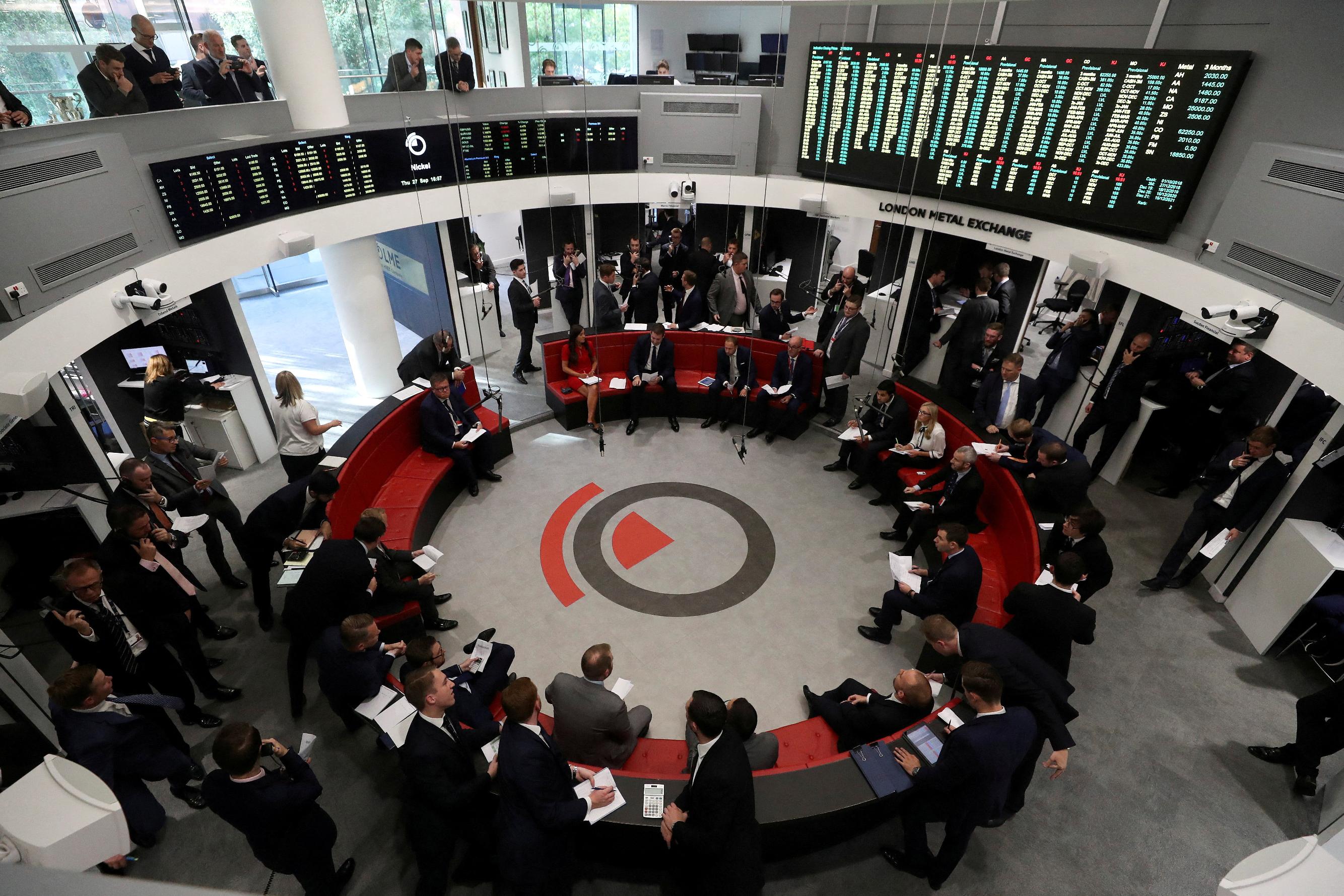
2024-09-10 04:59
Kanda led yen-buying interventions in 2022 and 2024 ADB chief Asakawa to step down in Feb 2025 Emerging economies question tradition of advanced economies leading global financial institutions TOKYO, Sept 10 (Reuters) - Japan will nominate Masato Kanda, the country's former top currency diplomat, as its candidate to become next head of the Asian Development Bank (ADB), Finance Minister Shunichi Suzuki said on Tuesday. Since the ADB was founded in 1966, its top post has always been filled by someone from Japan which, along with the United States, is the bank's biggest shareholder. That makes Kanda a strong candidate to take up the post. "(Kanda) is most appropriate to lead the ADB as he is well-versed in Asia-Pacific affairs and has built deep networks with executives from various countries and international institutions," Suzuki said at a regular press conference. Kanda, if elected, will succeed Masatsugu Asakawa, who announced on Monday his intention to step down from his position effective Feb. 23, 2025. The development lender said in a statement that election of the next ADB president would follow "an open, transparent, and merit-based process". Kanda, who stepped down in July after three years as vice finance minister for international affairs, led massive bouts of yen-buying intervention in the currency markets in 2022 and 2024. He currently serves as a special adviser to the cabinet. Asakawa, also a former top Japanese currency diplomat, became ADB president in January 2020 and oversaw measures to help the region's economies deal with the COVID-19 pandemic. Several emerging economies, emboldened by their rapid growth, have questioned the tradition of advanced economies taking the top posts at global financial institutions. Officials from the United States head the World Bank and Europeans head the International Monetary Fund. Sign up here. https://www.reuters.com/world/japan/japan-nominates-ex-currency-diplomat-kanda-head-adb-2024-09-10/

2024-09-10 04:36
A look at the day ahead in European and global markets from Rae Wee The rebound in global share markets proved short-lived in Asia on Tuesday, as yet another set of lacklustre economic indicators from China soured the mood and capped gains in Asian stocks. That has set up a mixed opening in Europe, with EUROSTOXX 50 futures pointing to a positive start, while FTSE futures fell 0.3%. Figures on British pay growth and joblessness are due later in the day just as London wakes up, where expectations are for them to point to a further easing of inflationary pressures. That could pave the way for more rate cuts from the Bank of England, though doing so next week could surprise investors, given they are only pricing in a slim chance of 25 basis points worth of easing. The Fed also meets next week and a 25bp cut is pretty much a done deal, so that leaves the fate of an outsized 50bp move in the hands of Wednesday's U.S. inflation report. Turning the focus back to China, trade data on Tuesday showed exports unexpectedly picked up pace in August, but imports missed forecasts. That followed Monday's figures on consumer prices, whose rise had little to do with a recovery in domestic demand as producer price deflation worsened. Chinese stocks struggled to catch a bid on Tuesday and fell to a seven-month trough (.CSI300) , opens new tab. Meanwhile, underscoring the anaemic consumer demand, the CSI Tourism Index (.CSI930633) , opens new tab sank to a record low. It has been a downward trend for Chinese equities for months now, and it's obvious Beijing has to do a lot more to restore investor confidence in its ailing stock market. Mounting trade tensions definitely are not helping as well. The U.S. House of Representatives passed a bill this week that aims to restrict business with China's WuXi AppTec (603259.SS) , opens new tab BGI and several other biotech companies on national security grounds, sending Hong Kong-listed shares of WuXi AppTec down more than 10% at one point. Key developments that could influence markets on Tuesday: - UK ILO unemployment rate (July) - UK average weekly earnings 3M (July) - Germany final CPI (August) Sign up here. https://www.reuters.com/markets/europe/global-markets-view-europe-2024-09-10/

2024-09-10 00:37
Apple little changed after latest iPhone unveiling Boeing jumps after reaching tentative labor deal Dell, Palantir rise as stocks to be added to S&P 500 Indexes up: Dow 1.2%, S&P 500 1.16%, Nasdaq 1.16% Sept 9 (Reuters) - Wall Street's three major indexes gained more than 1% on Monday as investors looked for bargains after the previous week's sell-off while they also waited for inflation reports in coming days and the Federal Reserve's next policy decision next week. Investors had fled from equities last week when Friday's weaker-than-expected August jobs data followed weak manufacturing data on Tuesday, driving the Nasdaq Composite's (.IXIC) , opens new tab biggest weekly loss since January 2022, and the S&P 500's (.SPX) , opens new tab biggest weekly decline since March 2023. Along with jitters about the U.S. economy's health investors have been contending with uncertainty about the Fed's interest rate decision due Sept. 18. But they arrived at their desks in what looked like more bullish moods on Monday. "Investors had a little time over the weekend to think about things. Clearly there was an overreaction to economic data last week. It raised overblown fears of a potential recession," said Kristina Hooper, chief global market strategist at Invesco. "A pause gives you the opportunity to be more rational." The Dow Jones Industrial Average (.DJI) , opens new tab rose 484.18 points, or 1.20%, to 40,829.59, the S&P 500 (.SPX) , opens new tab gained 62.63 points, or 1.16%, to 5,471.05 and the Nasdaq Composite (.IXIC) , opens new tab gained 193.77 points, or 1.16%, to 16,884.60. This week's key events include the consumer price index (CPI) report, due Wednesday morning after Tuesday night's first debate between U.S. presidential candidates Democrat Kamala Harris and Republican Donald Trump ahead of the Nov. 5 election. But in the meantime Phil Blancato, chief market strategist at Osaic Wealth, New York said investors are taking another look at "high quality stocks that are cheaper." In particular Blancato pointed to shares of market heavyweight and artificial intelligence chipmaker favorite Nvidia (NVDA.O) , opens new tab, which closed up 3.5% on Monday after falling 15.3% last week. However, since trading is usually more muted before big economic news, Blancato was concerned to see a rally before Wednesday's CPI inflation report, which is expected to help inform whether the Fed cuts rates by 25 or 50 basis points. "The market's expecting a very soft print and locking in a Fed cut. What happens if we don't get that?" said Blancato who expects volatility after whatever decision the Fed makes. Some investors will be disappointed if the Fed only cuts rates by 25 basis points but if the cut is double that, they will be worried that the Fed has big concerns about the economy. "It's a lose-lose situation," the strategist said. Wednesday's report is expected to show a moderation in headline inflation in August to 2.6% on a yearly basis, while on a monthly basis it is expected to remain unchanged at 0.2%. The CPI report will be followed by producer prices data on Thursday. Shares in Apple Inc (AAPL.O) , opens new tab had a lackluster day on Monday, closing up just 0.04% after earlier falling almost 2% as it unveiled its artificial intelligence-boosted iPhone 16. The eleven major S&P 500 industry sectors closed higher, with consumer discretionary leading gains, up 1.63% followed closely by industrials (.SPLRCI) , opens new tab, which added 1.56%. The smallest gainer was communications services (.SPLRCL) , opens new tab, which added 0.04%. Apple's long-awaited phone launch came hours after Chinese rival Huawei (HWT.UL) began racking up orders for its tri-fold Mate XT phone. Boeing (BA.N) , opens new tab shares advanced 3.4% after the planemaker and its biggest union reached a tentative deal covering more than 32,000 workers, averting a possible strike. Shares in Palantir (PLTR.N) , opens new tab rose 14% and Dell Technologies (DELL.N) , opens new tab added 3.8% on the news issued late Friday they will join the S&P 500 index on Sept. 23. In the benchmark index, these stocks will replace American Airlines Group (AAL.O) , opens new tab, which added 3.9%, and Etsy (ETSY.O) , opens new tab, which fell 1.6% and Bio-Rad Laboratories , which closed down 2% on the day. On U.S. exchanges 10.75 billion shares change hands compared with the 10.72 billion moving average for the last 20 sessions. Advancing issues outnumbered decliners by a 2.16-to-1 ratio on the NYSE where there were 258 new highs and 111 new lows. On the Nasdaq, 2,548 stocks rose and 1,616 fell as advancing issues outnumbered decliners by a 1.58-to-1 ratio. The S&P 500 posted 27 new 52-week highs and 4 new lows while the Nasdaq Composite recorded 45 new highs and 177 new lows. Sign up here. https://www.reuters.com/markets/us/futures-start-week-upbeat-note-soft-landing-optimism-lingers-2024-09-09/

2024-09-10 00:25
Brent futures settle below $70 for first time since December 2021 OPEC revises down world oil demand for 2024, 2025 Tropical Storm Francine causes offshore production shut-ins Investors await EIA weekly oil stock data at 10:30 a.m. EDT (1430 GMT) on Wednesday HOUSTON, Sept 10 (Reuters) - Global oil benchmark Brent crude futures settled at their lowest level since December 2021 on Tuesday, after OPEC+ revised down its demand forecast for this year and 2025, offsetting supply concerns from Tropical Storm Francine. Brent crude futures settled down $2.65, or 3.69%, at $69.19 a barrel. U.S. West Texas Intermediate (WTI) crude settled down $2.96, or 4.31%, to $65.75 a barrel. Both benchmarks dropped by more than $3 during the session, after each rose by about 1% on Monday. WTI crude futures fell more than 5% on Tuesday, hitting their lowest levels since May 2023. On Tuesday, the Organization of the Petroleum Exporting Countries (OPEC) in a monthly report said world oil demand would rise by 2.03 million barrels per day (bpd) in 2024, down from last month's forecast for growth of 2.11 million bpd. Until last month, OPEC had kept the forecast unchanged since it was first made in July 2023. OPEC also cut its 2025 global demand growth estimate to 1.74 million bpd from 1.78 million bpd. Prices slid on the weakening global demand prospects and expectations of oil oversupply. Separately, the U.S. Energy Information Administration (EIA) on Tuesday said global oil demand is set to grow to a bigger record this year while output growth will be smaller than prior forecasts. Global oil demand is expected to average around 103.1 million barrels per day this year, the EIA said, some 200,000 bpd higher than its previous forecast of 102.9 million bpd. Oil prices remained depressed after the EIA forecast release, as concerns about China continued to weigh on prices. Data released on Tuesday showed China's exports grew in August at their fastest in nearly 1-1/2 years, but imports disappointed with domestic demand depressed. Meanwhile, Asian refiners' margins fell to their lowest seasonal level since 2020 last week on rising supplies of diesel and gasoline. "There's almost no oil demand growth in the advanced economies this year. Fiscal stimulus in China has not boosted the construction sector; that's one big reason Chinese demand for diesel is shrinking," said Clay Seigle, an oil market strategist. Investors are increasingly pricing in a slowing global economy, according to Phil Flynn, a senior analyst at Price Futures Group. Energy stocks were the biggest loser among the S&P 500 sectors on Tuesday. Hess (HES.N) , opens new tab, Chevron (CVX.N) , opens new tab, Occidental Petroleum (OXY.N) , opens new tab, Halliburton (HAL.N) , opens new tab, SLB (SLB.N) , opens new tab, Ovintiv (OVV.N) , opens new tab, Devon Energy (DVN.N) , opens new tab, all set new intraday 52-week lows on Tuesday. STORM HITS U.S. OUTPUT Meanwhile, Tropical Storm Francine barrelled across the Gulf of Mexico driving operators to shut in around a quarter of offshore crude production, the U.S. Bureau of Safety and Environmental Enforcement said on Tuesday. The U.S. Gulf of Mexico accounts for about 15% of all domestic oil production and 2% of natural gas output, according to federal data. The storm was on track to become a hurricane on Tuesday, the U.S. National Hurricane Center said. Exxon Mobil (XOM.N) , opens new tab, Shell (SHEL.L) , opens new tab and Chevron (CVX.N) , opens new tab have removed offshore staff and halted some Gulf of Mexico oil and gas operations. So far, production shut-ins have failed to offset weak demand sentiment and support prices, analysts said. Meanwhile, U.S. crude oil and gasoline inventories fell while distillates rose last week, according to market sources citing American Petroleum Institute figures on Tuesday. The API figures showed crude stocks fell by 2.793 million barrels in the week ended Sept. 6, the sources said, speaking on condition of anonymity. Gasoline inventories fell by 513,000 barrels, and distillates rose by 191,000 barrels. Investors await weekly oil stock data from the EIA, published at 10:30 a.m. EDT (1430 GMT) on Wednesday. Sign up here. https://www.reuters.com/markets/commodities/oil-steady-supply-disruptions-storm-francine-offset-weak-demand-2024-09-10/

2024-09-10 00:07
China developing 1.28 bln tons of coal mining capacity Chinese mines in progress more than half global pipeline 35% of projects in pipeline under construction Current large-scale capacity is 3.88 mln metric tons/year China responsible for 70% of coal mine methane emissions BEIJING, Sept 10 (Reuters) - China accounts for more than half of the world's pipeline of new coal mines, risking a significant increase in methane emissions, a new study published on Tuesday showed. China is developing enough new mines to produce 1.28 billion metric tons of coal each year, said the report by U.S.-based Global Energy Monitor (GEM) which included large mines with at least 1 million tons of annual capacity as of April. It said 35% of that capacity is already under construction, meaning a surge in production is expected in three to five years. "Expanding coal production capacity is currently a national policy priority and a political task. State-owned enterprises, which dominate the sector, are often mandated to fulfil this objective," said GEM project manager Dorothy Mei. China's system of long-term contracts guarantees the profitability of coal companies, Mei added. China's existing mines have made it responsible for 70% of global coal mine methane emissions from similar sized large mines, and if all the proposed projects are completed, this would rise to 75%, the report said. "The surge in new production starkly contrasts with China's dual carbon neutrality targets," it said. Methane emissions come from activities such as energy production, agriculture, and landfill and are short-lived in the atmosphere but much more potent than carbon dioxide as a greenhouse gas. They have driven about a third of the rise in global temperatures since the Industrial Revolution. China's pipeline accounts for more than half of mines under development globally, and includes projects under all stages of development, including those proposed, permitted as well as already under construction. By comparison, China's existing current large-scale coal mine capacity is 3.88 billion tons per year, the report found, which is nearly half the global total. China, the world's largest producer and consumer of the fossil fuel, mined a total 4.66 billion tons of coal in 2023, a record high, data from its statistics bureau showed. Sign up here. https://www.reuters.com/business/energy/china-has-more-than-1-bln-tonsyear-new-coal-mines-pipeline-report-says-2024-09-10/

2024-09-10 00:00
LONDON, Sept 9 (Reuters) - It says much about the London Metal Exchange that the focal point of its trading liquidity revolves around shipping times set in the late 19th century. It took three months for Chilean copper and Malaysian tin to arrive in London when the LME was formally established in 1877. Modern ships can do the journey in a third of the time, but the LME's anchor price remains a rolling three-month contract. The LME also retains one of the last surviving open outcry venues - its original red-seated ring - although it now co-exists with inter-office and electronic trading. While other commodities exchanges have adopted a standardised monthly futures trading model, the LME remains at heart an arrivals market with a bewildering array of daily, weekly and monthly prompt dates. This complex ecosystem serves to disperse liquidity across both dates and trading venues, but many of the LME's own members have played a part in fragmenting the marketplace. The exchange has realised that if it is to remain a global metals trading hub in the 21st century, it needs to find a way to stop the liquidity drain. FRAGMENTED LIQUIDITY The core role of any exchange is "to centralise liquidity and provide the golden source for price information", to quote the LME's "White Paper on Enhancing Liquidity", released last week. Yet only 48% of last year's traded volumes were transacted on the LMESelect electronic platform. This is a very low ratio by comparison with most other exchanges, which capture more than 95% of trades on a central electronic platform. Moreover, while the rolling three-month date provides a liquidity point for electronic trading, that's not reflected in the distribution of open interest. Around 75% of total open interest sits on the monthly third-Wednesday prompt dates even though only 2% of these trades are currently transacted through the central electronic system. Quite evidently, a lot of trading activity is bypassing the LME's centralised dealing system to the detriment of price competition and transparency. DARK POOLS To some extent this has always been a problem. The complexity of the LME's date structure requires the mediating skills of exchange members, whether it be to adjust a trade from the rolling three-month date to a monthly prompt or to structure an averaging trade for monthly price hedgers. That's the essence of the inter-office section of the market. LME members have always sought to offset such customer trades on their own trading books, meaning what's executed on exchange is a net fraction of the actual order flow. What's changed in the last decade, however, is the proliferation of proprietary member trading systems. The traditional intermediary function has been industrialised. The re-routing of liquidity from the exchange to the inter-office market has been compounded by the growing number of users opting for an over-the-counter trading relationship with LME members. The European Market Infrastructure Regulation adopted in 2012 was intended to drive more OTC business onto exchanges. But it has backfired spectacularly when it comes to the LME. The stricter rules on collateral have driven many smaller industrial users of the LME to OTC relationships with banks offering credit lines as part of the brokerage package. Together with proprietary price-streaming platforms, the effect has been to create multiple dark pools of liquidity sitting close to, but not on, exchange. The regulatory vulnerabilities created by this fragmentation were highlighted by the 2022 nickel crisis, when the LME lacked a clear understanding of positions that sprawled across both exchange and OTC platforms operated by multiple members. BLOCK TRADE THRESHOLDS The primary goal of the LME's package of proposals in the White Paper "is to increase liquidity in the central electronic venue which will ultimately improve the bid-offer spread and support better execution for end clients". There are many components to the LME's liquidity booster plan, but the core is a proposal to introduce block trade thresholds. Block trades are normally large-scale transactions negotiated outside of the electronic order book before being registered with the exchange. Thresholds are already standard practice in other exchanges and block trades typically account for less than 5% of traded volumes in peer markets, the LME noted. On the London exchange, by contrast, more than half of the exchange's volumes are conducted in the inter-office market, where there are no caps. The LME is proposing a threshold of 10 lots for its core base metals contracts, excluding tin. Any trade below that size will be required to be executed electronically. Daily prompts and cash date trading will be excluded in a nod to the exchange's industrial users seeking to lock in an average monthly price to match their physical pricing. FEAR OF MISSING OUT As ever with the LME, reform will be a slow process. The exchange is targeting the second half of next year to introduce any changes. Members will likely fight a rearguard action, arguing over the devilish details. But the LME is right to try to halt this growing fragmentation, if it wants to grab a share of the renewed investor interest in industrial metals such as aluminium, copper and nickel that are critical for decarbonisation. CME Group (CME.O) , opens new tab has up to now reaped most of the rewards from the heightened investor appetite for all things metallic. The U.S. exchange has successfully launched new contracts for battery metals lithium and cobalt, while also rolling out micro and weekly options products to enhance its benchmark copper contract. The LME, by contrast, is currently too complex a trading landscape for many new investors. The fact that half of the exchange's trades are currently not visible on what is supposed to the central trading venue doesn't help. If the LME is to retain its position as price setter for the world's metals trade, it's time to evolve from its 19th century business model. The opinions expressed here are those of the author, a columnist for Reuters. Sign up here. https://www.reuters.com/markets/commodities/london-metal-exchange-looks-plug-liquidity-drain-2024-09-09/
